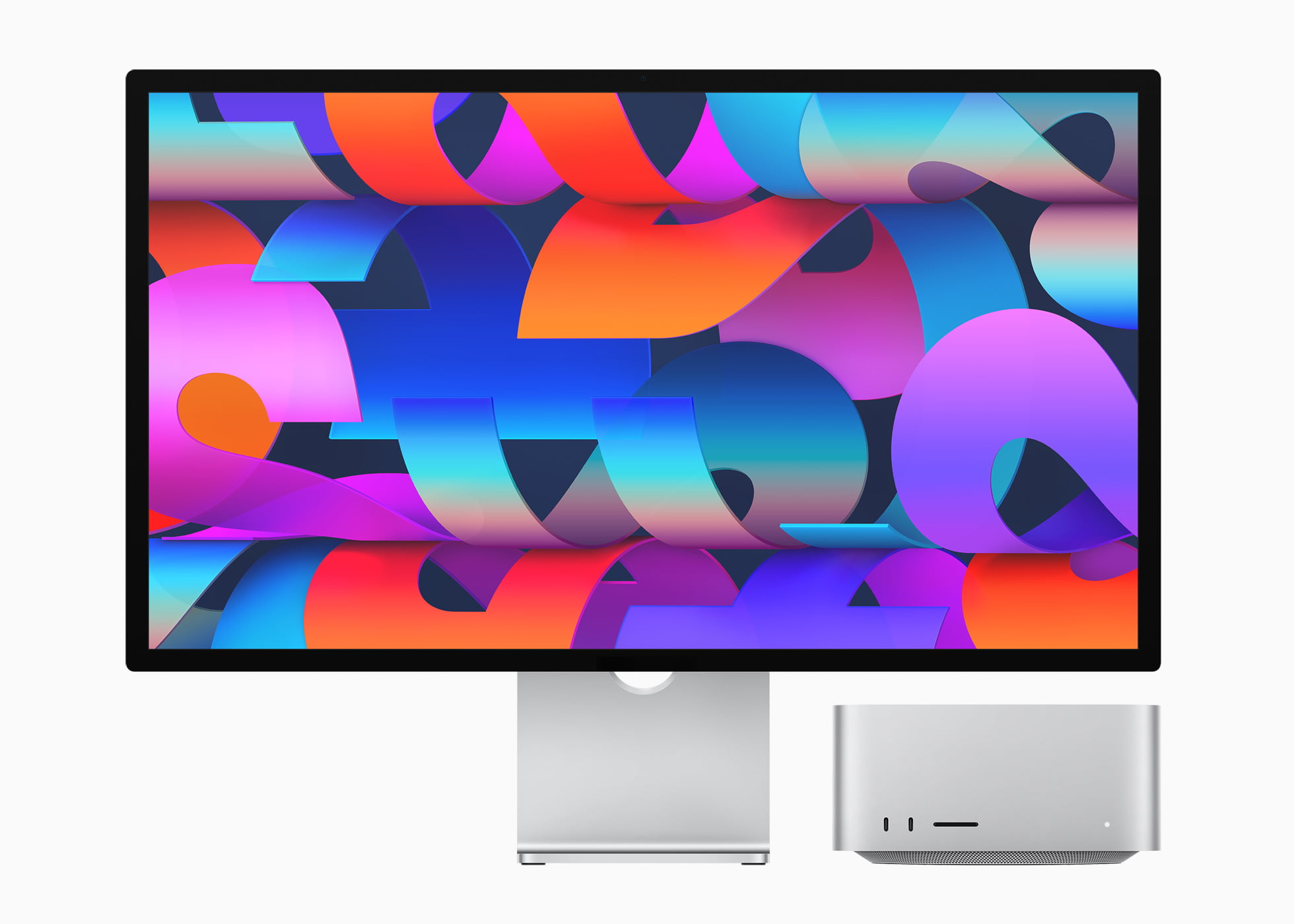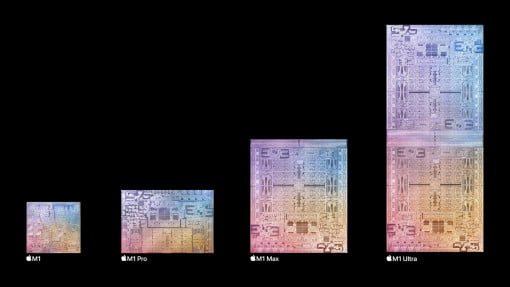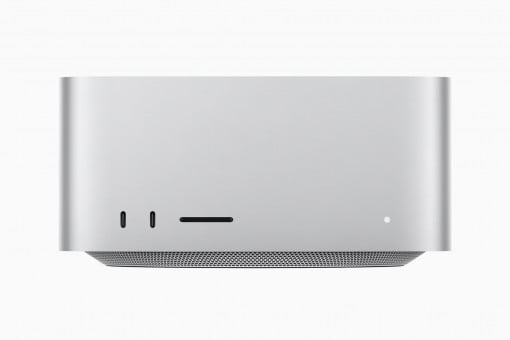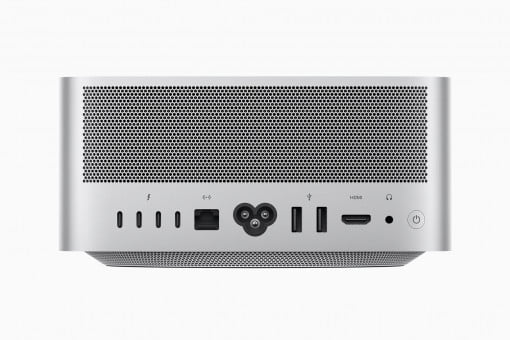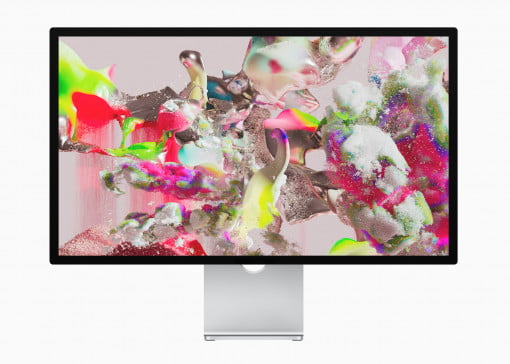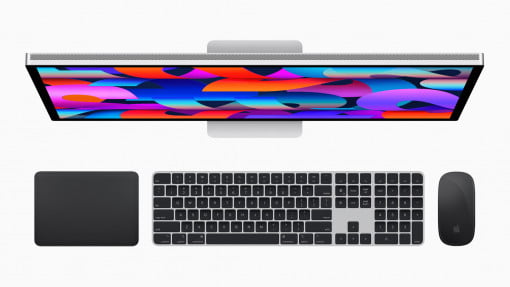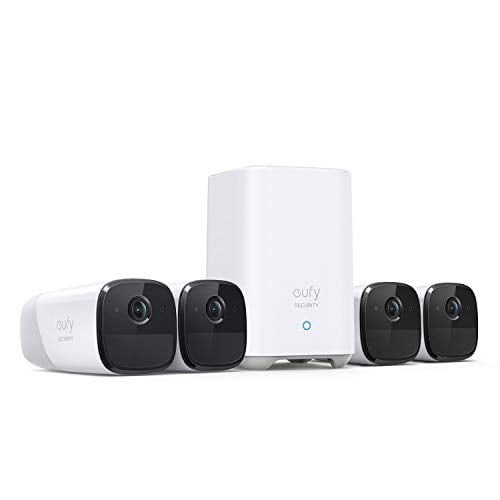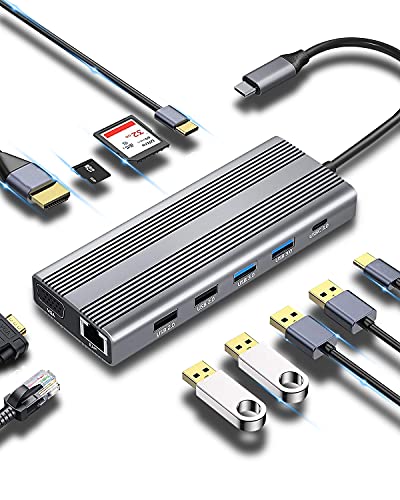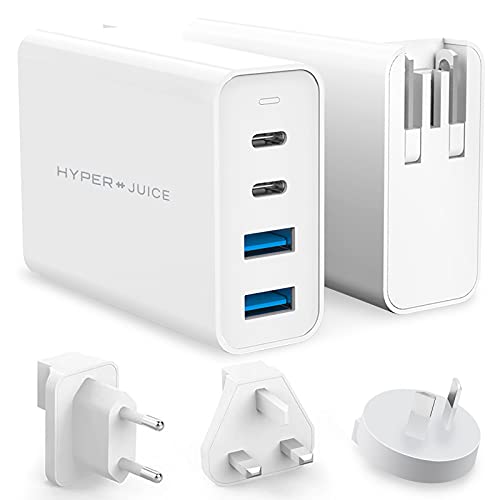Apple separates display and computer again: The Mac Studio and the Studio Display come onto the market as a team.
New Max Studio with M1 Ultra
With the discontinuation of the iMac 27″ and the iMac Pro and as a significantly cheaper offer for the Mac Pro, Apple brings the Mac Studio for professional users. The device looks like a Mac mini that has grown in height and even has an SD card slot on the front In addition, two USB-C ports (M1 Max) or two Thunderbolt 4 ports (M1 Ultra) are available on the front.
As you have noticed, Apple is also releasing a new chip within the M1 family. Surprisingly, the already known M1 Max chip is not the maximum, but now the M1 Ultra. Apple has combined two M1 Max chips on one processor die and thus has a maximum of 20 CPU and 64 GPU cores. The memory bandwidth has also doubled to 800 GB/s, as has the maximum (ultra) RAM configuration: the M1 Ultra now has 64 GB as standard and 128 for an additional charge.
The Mac mini’s body has grown taller to accommodate two large fans that make the device a Mac Studio. The greater heat generated by two M1 chips, so to speak, has to be dissipated quietly, which is why half of the internal volume consists of two fans. This leads to the somewhat clumsy design, but should ensure very quiet operation in everyday use. Conceptually, the Mac Studio is more of the successor to the 2013 Mac Pro, the small bin. Here, too, extreme computing power was cooled by a large fan system.
There is no shortage of performance: the Mac Studio with M1 Max is said to be up to 2.5 times faster than an iMac 27 with a 10-core processor. With the M1 Ultra, the factor is even 3.8. Performance friends should therefore be very satisfied.
The price is very cheap compared to a Mac Pro. The smaller model costs $1999, with the M1 Ultra $3999. However, if you are switching from the iMac, you will find that this price does not include a display.
New 27-inch studio display
Apple is bringing the new 27″ Studio Display onto the market for this. It costs $1599 (with height adjustment $1899) and achieves a P3 color space with 600 nits of maximum brightness. Nano-texture glass for low reflections is also available as an option.
On the back there are three USB-C ports and a Thunderbolt 3 connector. A 12 MP webcam with follow-up function is installed on the front. There is also a speaker system for 3D audio. Anyone who remembers Apple’s past will discover a modern version of the Thunderbolt display here, which with integrated extensions and ports is an ideal addition to a (portable) Mac.
Mac Studio and Studio Display make a good team
The Mac Studio is a very powerful and at the same time very fairly priced alternative to the Mac Pro and the discontinued iMacs including the iMac Pro. Together with the Studio Display, they offer top performance for many professional applications.
If you want a larger display, you can also use the Pro Display XDR if you have the right budget. If you want to use the great 5K 27″ studio display, but can do without the very high performance, you should reach for the Mac mini. With its M1 chip, it can already carry almost all Intel iMacs in your pocket.
